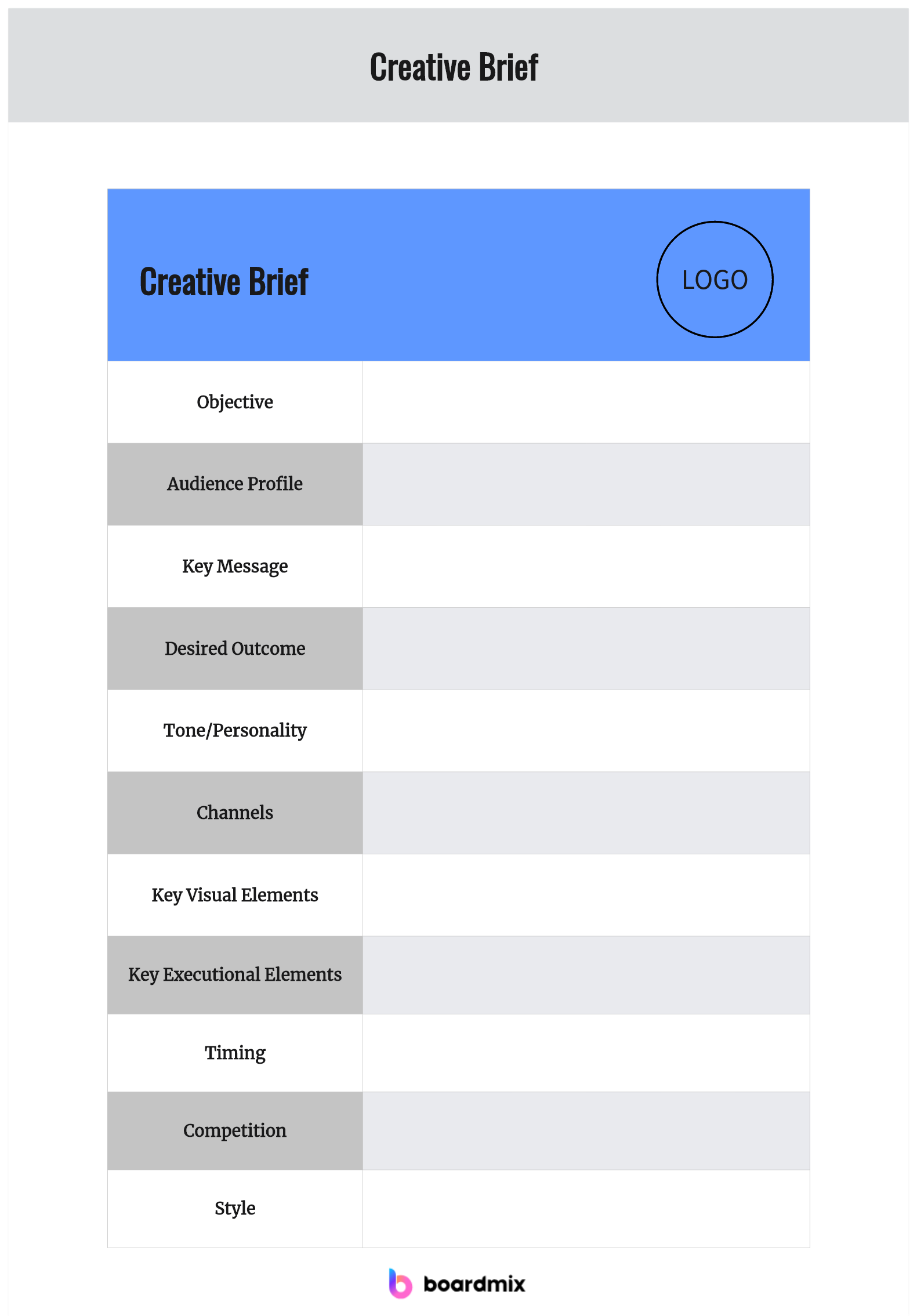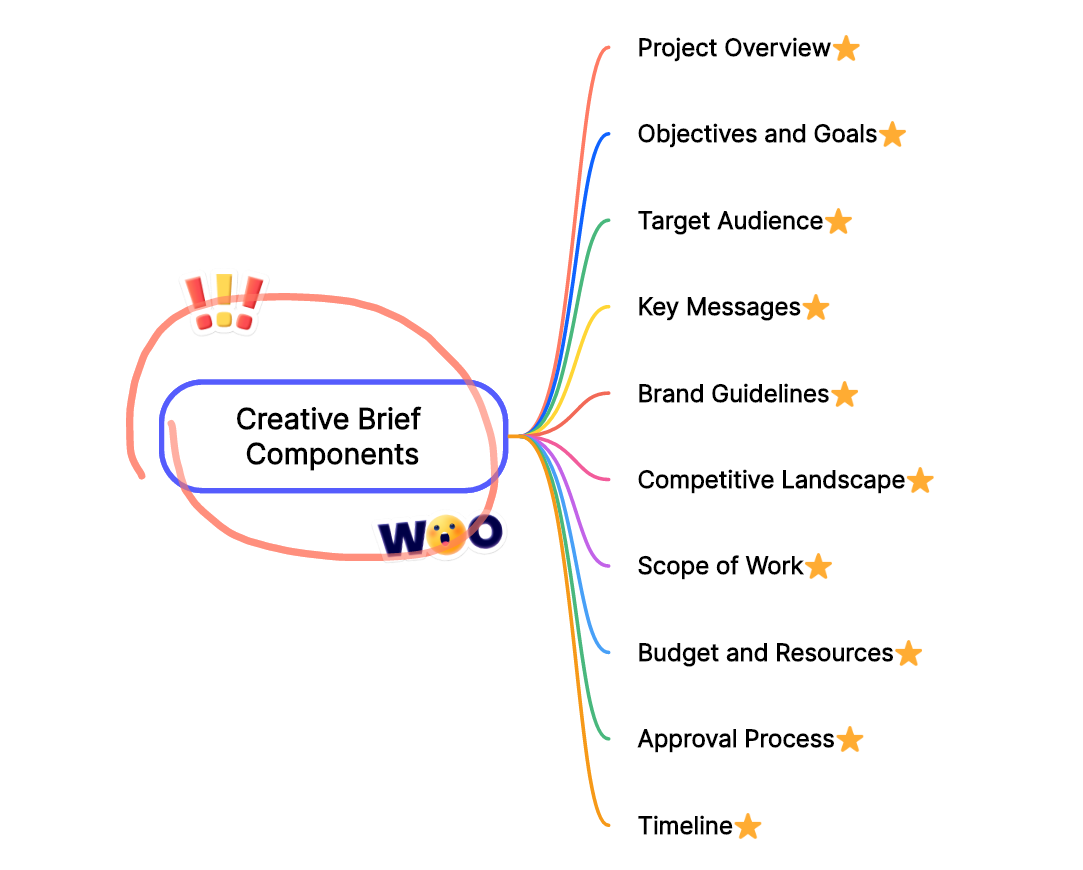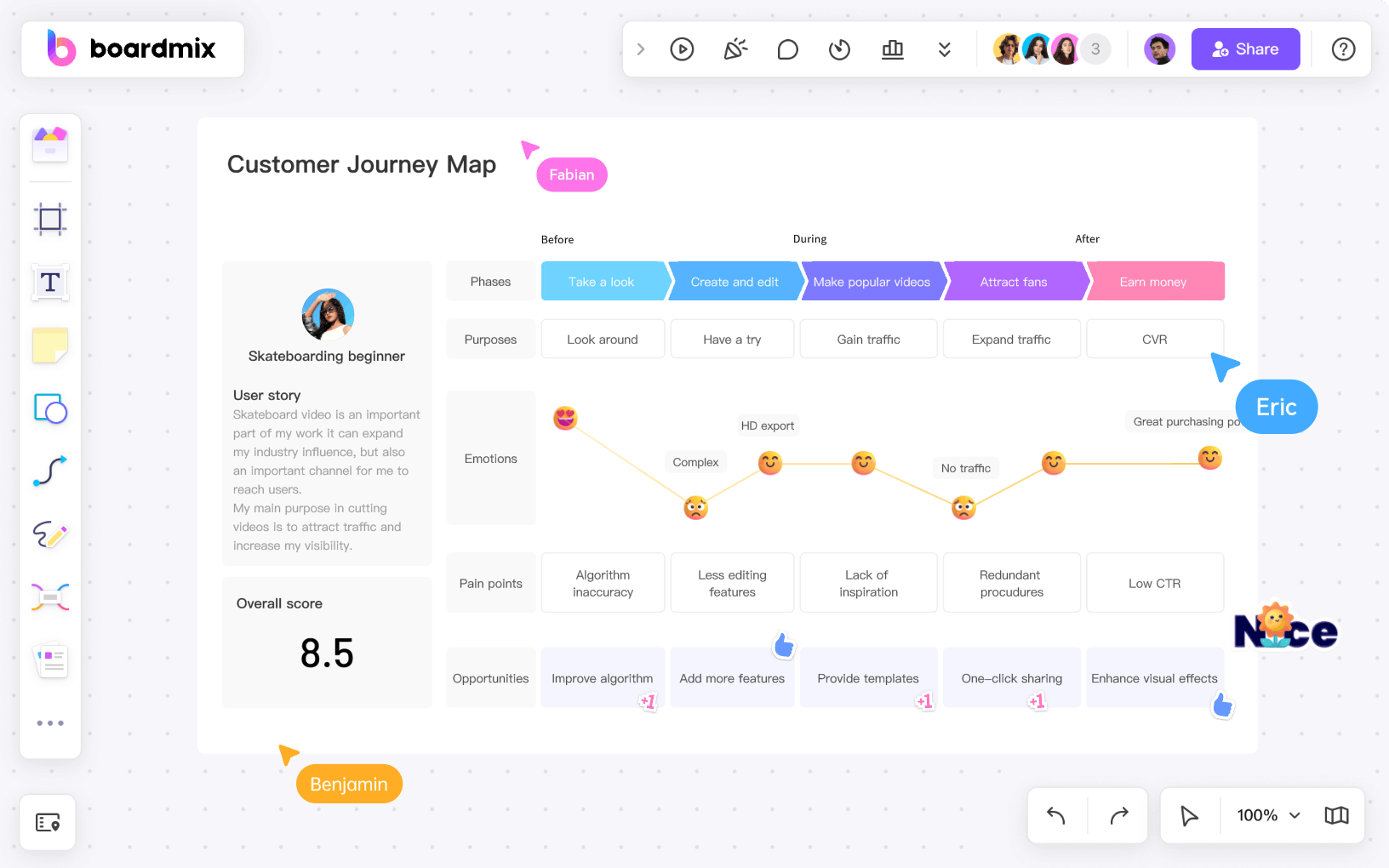In the dynamic and competitive landscape of the creative industry, a well-crafted creative brief serves as a compass, guiding teams through the intricacies of a project. Whether you're a designer, marketer, or part of a creative agency, a creative brief is an essential tool for aligning goals, fostering collaboration, and ultimately delivering exceptional results. In this article, we'll explore the key elements of a creative brief and why it's crucial for the success of any creative endeavor.

Part 1. What is a Creative Brief?
A creative brief is a document that outlines the objectives, scope, and expectations of a creative project. It acts as a communication bridge between clients and creative teams, providing a clear roadmap for the development of a campaign, design project, or any creative initiative. A well-crafted brief sets the tone, establishes a shared vision, and helps avoid misunderstandings or misinterpretations down the line.
Part 2. What Are the Key Components of a Creative Brief?
A well-crafted creative brief typically includes several key components to provide comprehensive guidance to the creative team. While specific formats may vary, the following components are commonly found in a creative brief:

Project Overview: Start with a concise overview of the project. Include details such as the project name, purpose, and a brief description. This section should provide a snapshot of what the project aims to achieve.
Objectives and Goals: Clearly articulate the goals and objectives of the project. What is the desired outcome? What specific results are expected? This section helps align the creative team with the client's vision and business objectives.
Target Audience: Define the target audience or demographic the creative work is intended to reach. Understanding the audience helps tailor the messaging, design, and overall creative approach to resonate with the intended viewers.
Key Messages: Outline the key messages that the creative project should convey. This includes core brand messages, unique selling points, or any specific information that needs emphasis.
Brand Guidelines: Provide details about the brand's identity, including logos, color schemes, fonts, and other visual elements. Adhering to brand guidelines ensures consistency and reinforces brand identity across various touchpoints.
Competitive Landscape: Conduct a brief analysis of the competitive landscape. Understanding what competitors are doing can help position the creative work in a unique and compelling way.
Scope of Work: Clearly define the scope of the project, including deliverables, timelines, and any constraints or limitations. This section ensures that all stakeholders have a shared understanding of the project's parameters.
Budget and Resources: Specify the budget allocated for the project and any available resources. This information is crucial for managing expectations and ensuring that the creative team has the necessary tools and support.
Approval Process: Clearly outline the steps and individuals involved in the approval process. This helps avoid delays and ensures that the project progresses smoothly through each stage.
Timeline: Create a realistic timeline that outlines key milestones and deadlines. A well-structured timeline keeps the project on track and helps manage client expectations regarding delivery dates.
Part 3. How a Creative Brief Works?
A creative brief serves as a crucial communication tool between the client or project manager and the creative team. Its primary purpose is to provide clear direction and essential information to guide the creative process. Here's how a creative brief typically works:
Initiation: The process begins when a client or project manager identifies the need for a creative project. This could be anything from a new advertising campaign to a website redesign.
Request for Creative Brief: The client or project manager initiates a request for a creative brief. They may provide initial information about the project and its objectives.
Development of the Creative Brief: The creative team, which may include copywriters, designers, and other relevant professionals, collaborates to develop the creative brief. They gather information on project goals, target audience, key messages, tone, style, deliverables, budget, and timeline.
Client Approval: The completed creative brief is then presented to the client or relevant stakeholders for approval. Any necessary revisions are made based on client feedback until the brief accurately reflects the project's requirements.
Guidance for the Creative Team: Once approved, the creative brief serves as a guide for the creative team throughout the project. It helps them understand the project's context, goals, and constraints, ensuring that their work aligns with the client's vision.
Creative Development: The creative team begins the process of developing concepts, designs, copy, or other creative elements based on the guidelines provided in the brief. They use the brief as a reference to ensure that their work meets the specified objectives.
Feedback and Revisions: The initial creative concepts are presented to the client for feedback. Based on the client's input, revisions may be made to refine and improve the creative work.
Final Approval: After a series of revisions and feedback loops, the final creative work is presented to the client for approval. Once approved, the project moves to the implementation phase.
Implementation: The finalized creative work is implemented across various channels, such as print, digital media, or events, depending on the project.
Evaluation: After implementation, the project's success is often evaluated against the initial objectives outlined in the creative brief. Lessons learned from the project may inform future creative briefs and projects.
By providing a structured framework and shared understanding, a creative brief helps streamline the creative process, reduce misunderstandings, and ensure that the final output effectively communicates the intended message to the target audience. It serves as a critical tool for collaboration between clients and creative professionals.
Part 4. How to Write a Creative Brief?
Writing a creative brief involves capturing essential information about a project and conveying it clearly to the creative team. Here's a step-by-step guide on how to write a creative brief:
Project Overview:
- Provide a brief description of the project, outlining its purpose and the need for creative input.
- Include any relevant background information that helps set the context.
Objectives and Goals:
- Clearly state the primary objectives and goals of the creative project.
- Keep it focused on what you want to achieve through the creative work.
Target Audience:
- Define the intended audience for the creative work.
- Briefly describe the audience's demographics, preferences, and behaviors.
Key Messages:
- Outline the main messages or points that the creative work should convey.
- Keep the messaging concise and aligned with the project's objectives.
Tone and Style:
- Provide brief guidance on the desired tone and style for the creative work.
- Consider the mood, language, and visual elements that best suit the project.
Deliverables and Timeline:
- List the specific items or assets that the creative team is expected to produce.
- Include a timeline with key milestones and deadlines for the project.
Approval Process and Contact Information:
- Outline the process for reviewing and approving the creative work.
- Provide contact information for key stakeholders and clarify how feedback should be communicated.
Remember, the key to a successful creative brief is clarity and focus. Keep each section concise and to the point, ensuring that the creative team can quickly grasp the essential details needed to deliver a successful project. If additional details are required, stakeholders can always provide more information during the collaboration process.
Part 5. Best Tool for Writing a Creative Brief
Boardmix is an innovative online whiteboard tool designed to streamline the process of creating a creative brief. With our extensive range of drawing templates, you can easily visualize your ideas, map out strategies, and collaborate with your team in real time. Unlike traditional methods, Boardmix allows you to create dynamic and interactive briefs that can be edited and updated as your project evolves. Whether you're brainstorming new concepts or presenting finalized plans, Boardmix provides a flexible and efficient solution for all your creative briefing needs.

Key features of Boardmix
- Real-time Collaboration: Boardmix allows multiple users to work on the same whiteboard simultaneously, enabling real-time collaboration and idea sharing.
- Extensive Drawing Templates: With a wide range of pre-designed templates, Boardmix makes it easy for users to visualize their ideas and create comprehensive project plans.
- Interactive Briefs: Unlike traditional static briefs, Boardmix's dynamic and interactive briefs can be edited and updated as your project evolves, keeping everyone on the same page.
- Easy-to-use Interface: Boardmix features an intuitive interface that requires no technical skills, making it accessible for everyone on your team.
- Secure Cloud Storage: All your whiteboards are securely stored in the cloud, ensuring you can access them anytime, anywhere.
Conclusion
A well-prepared creative brief is a foundational element for success in the creative industry. It serves as a strategic document that aligns stakeholders, provides clarity, and sets the stage for the development of impactful and effective creative work. By investing time and effort in creating a comprehensive creative brief, teams can navigate the complexities of creative projects with confidence, resulting in work that not only meets but exceeds expectations.
Experience a new level of efficiency and collaboration with Boardmix for your creative briefs. Our real-time collaboration feature, extensive drawing templates, and interactive briefs provide a dynamic platform to visualize and share your ideas. Try Boardmix today and revolutionize the way you create and manage your creative briefs.








